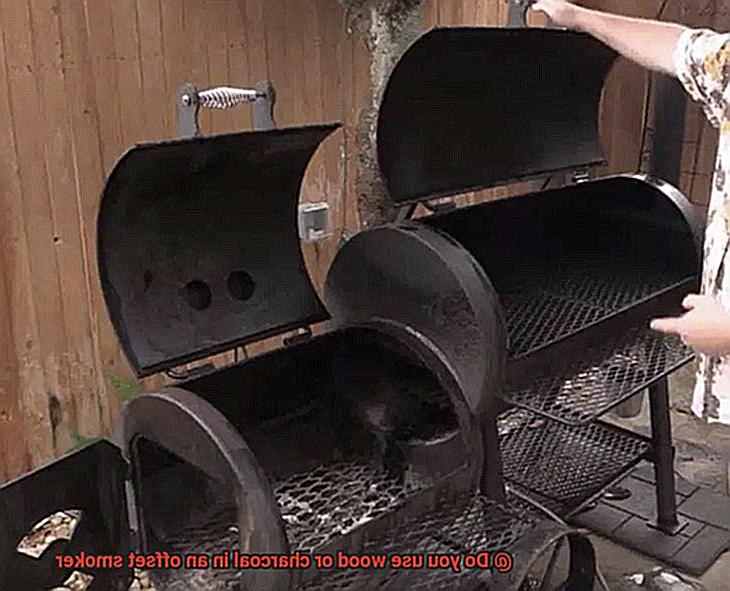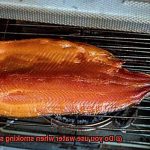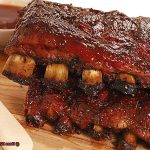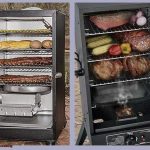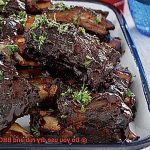Hey there, fellow grill masters. If you’re like me, then you know that cooking outdoors is more than just a hobby – it’s a way of life. And when it comes to slow-cooking meats and infusing them with that unbeatable smokey flavor, nothing beats an offset smoker. But here’s the million-dollar question: wood or charcoal?
It’s a debate as old as time itself, and both sides have their own loyal followers. Some swear by the natural taste of wood smoke, while others prefer the convenience of charcoal. But which one is right for you?
Well, fear not my friends, because in this blog post we’re going to settle this once and for all. We’ll take a deep dive into the world of offset smokers and explore the unique benefits of both wood and charcoal. By the end of this post, you’ll be armed with all the knowledge you need to make an informed decision.
Whether you’re a seasoned pitmaster or a backyard BBQ beginner, this post is for you. So grab your favorite beverage (I recommend something cold and refreshing), sit back, and get ready to learn everything there is to know about using wood or charcoal in an offset smoker. Let’s do this.
Contents
The Pros and Cons of Wood in an Offset Smoker
If you’re a true barbecue aficionado, then you know that the fuel source you use in your smoker can make all the difference. The debate between wood and charcoal has raged on for years, with proponents of each passionately defending their choice. In this post, we’ll take a closer look at the pros and cons of using wood in an offset smoker.
Pros:
- Flavor: When it comes to flavor, nothing beats wood. The distinct smoky taste it imparts on meats is what sets barbecue apart from other types of cooking. Different types of wood can provide different flavors, allowing for endless possibilities when it comes to taste.
- Versatility: Wood can be used for both smoking and grilling, making it a versatile fuel option. Whether you’re slow-smoking a brisket or quickly searing some chicken, wood can do it all.
- Availability: Depending on where you live, wood may be more readily available and affordable than other fuel sources like propane or natural gas. Plus, there’s something satisfying about chopping your own wood and using it to cook your food.
Cons:
- Temperature Control: One of the biggest drawbacks of using wood is its unpredictability when it comes to temperature control. Unlike charcoal, which burns at a more consistent temperature, wood can fluctuate wildly if not tended to carefully. This can lead to overcooked or undercooked meat, depending on how hot the fire gets.
- Smoke Production: While smoke is what gives barbecue its signature flavor, too much smoke can be a bad thing. If you use too much wood in your offset smoker, it can result in an overwhelming amount of smoke that can make your food taste bitter or unpleasant.
- Cost: Depending on where you live, wood may be more expensive than other fuel options like charcoal or propane. Plus, if you don’t have a ready supply of wood nearby, you may need to factor in the cost of transportation as well.
The Pros and Cons of Charcoal in an Offset Smoker
Charcoal might just be the answer. As an expert in this field, I’m excited to share with you the pros and cons of using charcoal in an offset smoker.
Firstly, let’s explore the positives. One of the biggest benefits of using charcoal is its convenience. It’s easily accessible and can be found in most grocery or hardware stores. Additionally, it’s a cost-effective option, making it ideal for those who want to smoke meat regularly. But that’s not all – charcoal offers consistent heat, which is crucial when it comes to smoking meat. Unlike wood, which can produce fluctuations in temperature depending on the type of wood and how it burns, charcoal burns consistently and can maintain a steady temperature for hours on end. This makes it easier to control the cooking process and achieve that perfect smoky flavor that we all crave.
However, there are some downsides to using charcoal in an offset smoker. One of the biggest drawbacks is that charcoal produces more ash than wood, which can be a hassle to clean up after a long smoking session. Additionally, some people find that charcoal can produce a slightly different flavor compared to wood, which may not be preferable for everyone.
When choosing charcoal as your fuel source, it’s important to consider the type of charcoal you use. There are two main types: briquettes and lump charcoal. Briquettes are more consistent in size and shape, making them easier to use for beginners. However, they also contain additives that can affect the flavor of your meat. Lump charcoal, on the other hand, is made from natural wood and produces less ash and a more authentic smoky flavor but can be more expensive.
Different Types of Woods Used in an Offset Smoker
Smoking meat is an art form that requires careful consideration of the type of wood used in an offset smoker. Each wood has a unique flavor profile that can range from bold and intense to mild and sweet. In this article, we’ll explore the different woods commonly used in offset smokers and how they can impact the taste of your meat.
Hickory: The Bold and Strong Flavor
Hickory is a popular choice for smoking meats like pork and beef due to its bold, smoky flavor. It burns hot and slow, making it perfect for low and slow cooking. However, hickory can be overpowering if used in excess, so it’s important to use it sparingly to avoid overwhelming your meat.
Mesquite: The Intense Flavor
Mesquite is another bold wood known for its intense, smoky flavor. It’s commonly used to smoke brisket and ribs but should be used sparingly as it can easily overpower the meat. When used in moderation, mesquite can add depth and complexity to the flavor of your meat.
Applewood: The Sweet Fruity Flavor
Applewood is a milder wood that adds a sweet, fruity note to your meat without overpowering it. It’s a great choice for smoking poultry and fish due to its subtle flavor profile. If you’re looking for a wood that adds a touch of sweetness to your meat without being too overpowering, applewood is an excellent option.
Cherrywood: The Mild Sweetness
Cherrywood has a mild, sweet flavor that pairs well with poultry and pork. It adds depth to the meat without overwhelming it with too much sweetness. Cherrywood is an excellent choice if you’re looking for a wood that adds a subtle sweetness without dominating the flavor of your meat.
Maplewood: The Subtle Sweetness
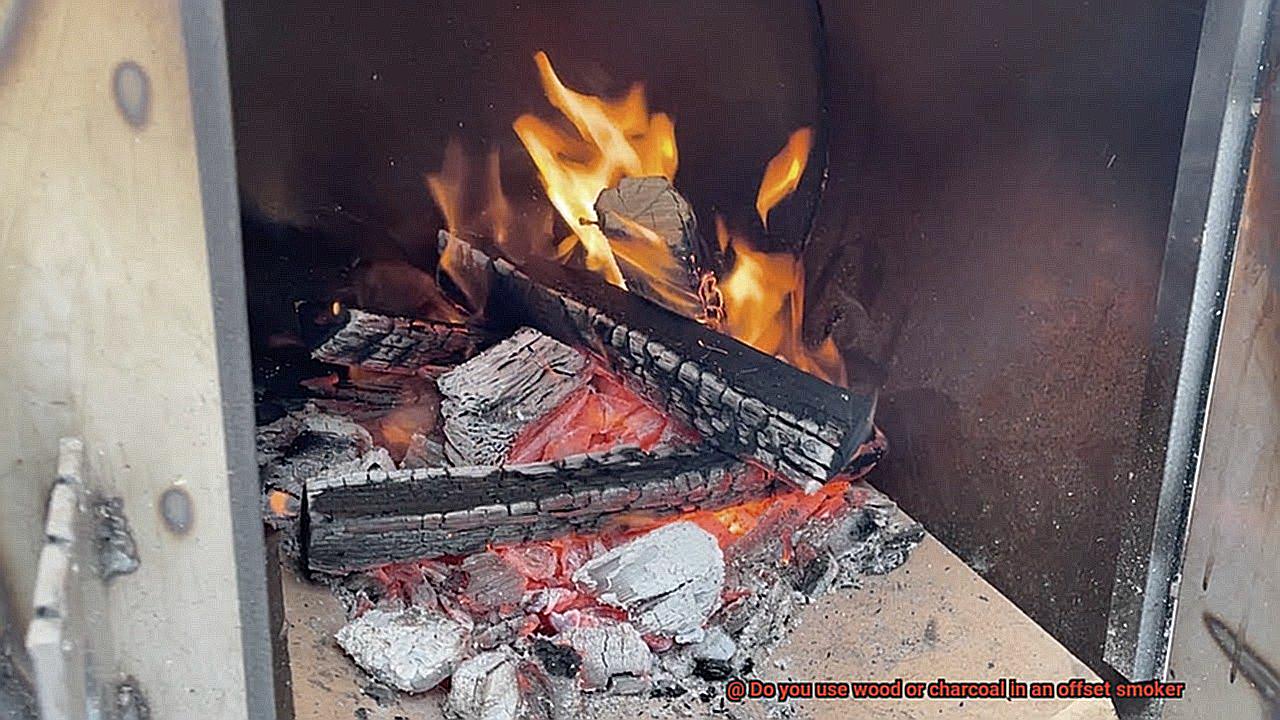
Maplewood is another great option if you’re looking for a wood that adds a subtle sweetness to your meat. It pairs well with pork and poultry and is perfect for those who want to add a touch of sweetness to their meat without being too overpowering.
Oakwood: The Balanced Flavor
Oakwood is a mild wood that’s often used as a base wood in combination with other woods. It has a balanced flavor that pairs well with a variety of meats and can add depth to the flavor profile without dominating it. Oakwood is an excellent option if you’re looking for a wood that adds complexity without overpowering the natural flavor of your meat.
How to Select the Right Type of Wood for Your Smoker
Smoking meat is a culinary art that requires a lot of patience and attention to detail. One of the most important aspects of smoking is choosing the right type of wood. The type of wood you choose will greatly impact the flavor and aroma of your meat, so it’s important to choose wisely. Here are some tips to help you select the perfect wood for your smoker.
Choose hardwoods that are free from chemicals or additives.
When selecting wood for your smoker, it’s important to choose a hardwood that is free from any chemicals or additives. This will ensure that the smoke is clean and safe for consumption. Oak, hickory, and mesquite are popular choices for smoking because they are readily available and provide a strong, smoky flavor. However, make sure to avoid using softwoods like pine or cedar as they contain resins that can be harmful when burned.
Consider the density of the wood.
The density of the wood you choose will greatly impact how it burns in your smoker. Hardwoods like hickory and oak are great for smoking because they burn slowly and impart a strong flavor. Fruitwoods like apple and cherry also work well, as they burn at a moderate pace and impart a sweet and fruity flavor to the meat. The density of the wood also affects how much smoke it produces, so be mindful of this when selecting your wood.
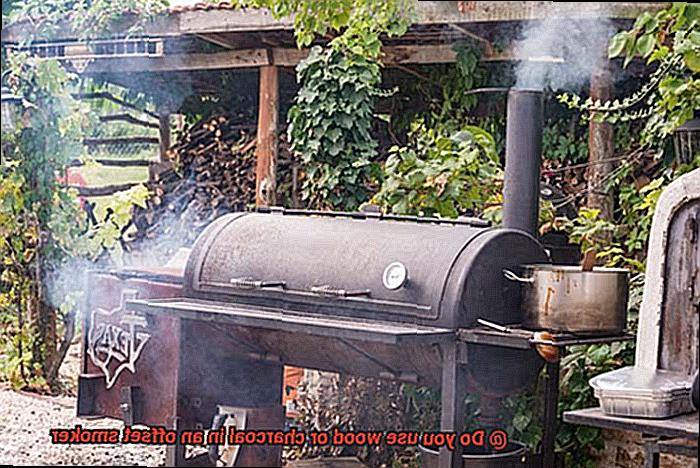
Match the strength of the wood’s flavor with the type of meat.
Each type of wood will impart a different flavor onto your meat, so it’s important to match the strength of the wood’s flavor with the type of meat you’re smoking. For example, oak provides a mild smoke flavor and is great for smoking beef and pork. Hickory has a stronger flavor and is perfect for smoking poultry and pork. Mesquite has a distinct, bold flavor and is best used sparingly with beef or game meats.
Decide whether to use wood chunks or chips.
Another factor to consider is whether you want to use wood chunks or chips. Wood chunks are larger and burn slower, but they also require more space in your smoker and take longer to heat up. Wood chips are smaller and burn faster, making them better suited for shorter smoking sessions or when you want to add a quick burst of smoke flavor to your meat. Consider the size of your smoker and the length of your smoking session when deciding which option to choose.
Experiment with different woods.
Finally, don’t be afraid to experiment with different types of wood to find your favorite flavor profile. Other types of wood that can be used for smoking include fruitwoods like apple, cherry, and peach. These woods provide a sweeter, more subtle smoke flavor that pairs well with poultry and pork. Alderwood is another option that has a light, sweet flavor and is great for smoking fish.
Tips for Using Wood in an Offset Smoker
If so, it’s important to know that choosing the right type of wood and maintaining a consistent temperature are key to achieving the perfect smoke. Here are five expert tips to help you get the most out of your wood-fired offset smoker:
Wood Selection is Key
The type of wood you choose will significantly impact the flavor of your meat. For instance, hickory is perfect for pork and beef, while applewood is best for poultry and fish. Mesquite is another popular choice, but it’s important to use it sparingly as its strong flavor can be overpowering.
Dry Wood is a Must
Wet or green wood produces too much smoke, which can make your meat taste bitter. Make sure to store your wood in a dry place for at least six months before using it in your smoker.
Add Wood Gradually
Adding too much wood at once can cause a sudden temperature spike, resulting in uneven cooking or burnt meat. Instead, add small pieces of wood throughout the cooking process to maintain a consistent temperature and flavor.
Keep a Consistent Temperature
Using a thermometer will help you monitor your smoker’s temperature and maintain a steady heat level. Adjusting the airflow as needed will also help keep the temperature consistent.
Clean Your Smoker Regularly
Since wood produces more ash than charcoal, cleaning out your smoker after each use is essential to prevent ash buildup from affecting airflow and temperature.
Tips for Using Charcoal in an Offset Smoker
Using charcoal in an offset smoker is a great way to achieve delicious BBQ, but it can be tricky if you don’t know what you’re doing. Here are some tips to help you get the best results possible.
Choose High-Quality Charcoal
The quality of the charcoal you use will impact the flavor of your food. Look for charcoal made from natural hardwoods such as oak, hickory, or mesquite. Avoid briquettes, which contain fillers and chemicals that can affect the taste of your BBQ.
Start with a Clean Firebox
A clean firebox is essential for even burning and good airflow. Before starting your fire, remove any ash or debris from previous uses. Then, arrange your charcoal in a pyramid shape for optimal air circulation.
Light Your Charcoal Carefully
Lighter fluid or other chemicals can leave an unpleasant taste on your food. Instead, use a chimney starter or electric starter to light your charcoal evenly and without any off-flavors. It’s also a good idea to let the coals fully ignite before adding them to the firebox.
Monitor the Temperature
Maintaining a consistent temperature is crucial for successful smoking. Use a thermometer to monitor your smoker’s temperature regularly and adjust the vents as needed to keep it steady. Be patient and avoid opening the lid too frequently, which can cause temperature fluctuations.
Add Wood Chips or Chunks
Wood chips or chunks can add extra flavor to your BBQ, but be careful not to overdo it. Too much smoke can result in a bitter taste. Soak your wood in water beforehand to prevent it from burning too quickly and releasing too much smoke.
Combining Wood and Charcoal for Maximum Flavor
Look no further than combining wood and charcoal in your offset smoker. This popular technique has been used by pitmasters for years to create mouth-watering, delicious meats that will have your guests begging for more.
To achieve the perfect combination of heat and flavor, it’s crucial to layer the charcoal and wood correctly in the smoker. The charcoal should be placed at the bottom to provide a steady heat source while the wood is added on top to deliver that incredible smoky flavor. This layering technique ensures even cooking and prevents the smoke flavor from overpowering the meat.
One effective method for incorporating both wood and charcoal is the “minion method.” This involves placing a small amount of lit charcoal on top of a larger amount of unlit charcoal, creating a slow and steady burn that can last for hours. It’s important to monitor the temperature regularly and make adjustments as needed to maintain consistent heat throughout the smoking process.
When it comes to choosing which types of wood to use, personal preference is key. Popular options include hickory, mesquite, applewood, and cherrywood, each imparting its own unique flavor. For even more variety, try combining different types of wood to create a custom flavor profile tailored to your individual taste.
zVNzGnUwb6o” >
Conclusion
In conclusion, the age-old debate of wood versus charcoal in an offset smoker is one that requires careful consideration. Each option has its own unique advantages and disadvantages that need to be weighed before making a decision. Wood offers a distinct smoky flavor and versatility, but can be unpredictable when it comes to temperature control and smoke production. Charcoal, on the other hand, is convenient and cost-effective with consistent heat output, but produces more ash than wood.
Selecting the right type of wood for your smoker is crucial for achieving optimal flavor profiles. Factors such as hardwood density, flavor profile, and meat pairing all play a role in determining which type of wood to use. For example, hickory works wonders with pork and beef while applewood pairs beautifully with poultry and fish.
To get the most out of your wood-fired offset smoker, experts recommend using dry wood and adding small pieces gradually throughout the cooking process. Maintaining a consistent temperature using a thermometer and adjusting airflow as needed is also key to success. For those who prefer charcoal in their offset smoker, high-quality natural hardwood charcoal is recommended along with careful attention paid to lighting methods and temperature monitoring.
Pitmasters suggest layering charcoal at the bottom for steady heat source with different types of wood on top for smoky flavor delivery. The “minion method” – placing lit charcoal on top of unlit charcoal – is also popular among smokers for creating slow-burning heat.
By following these tips and tricks from seasoned professionals, anyone can become a master of their offset smoker and achieve mouth-watering BBQ results every time.

